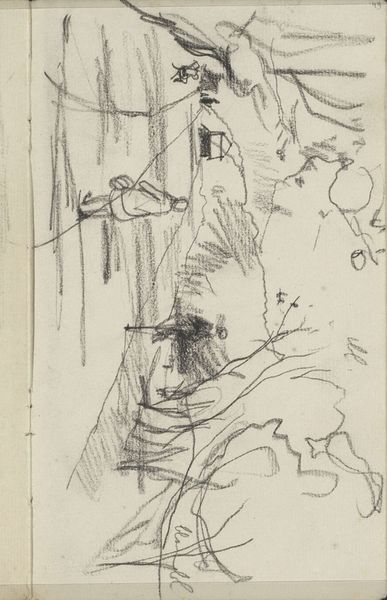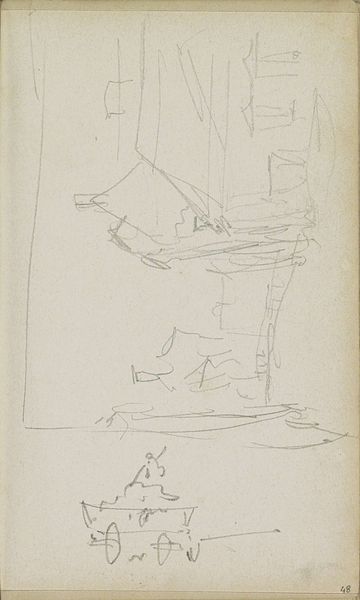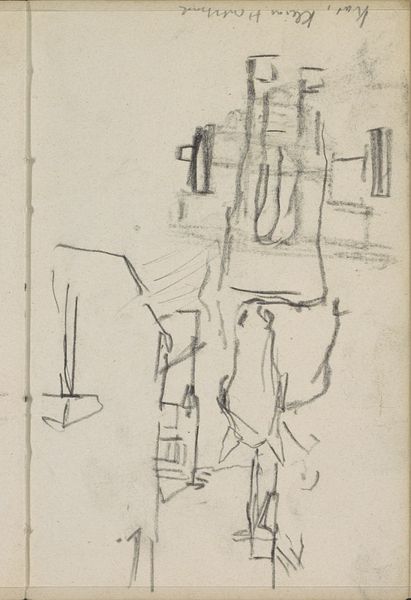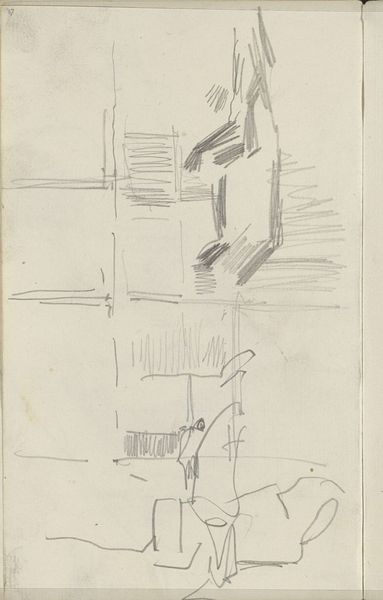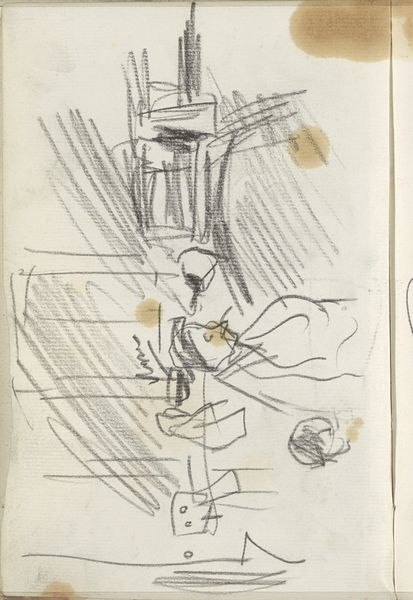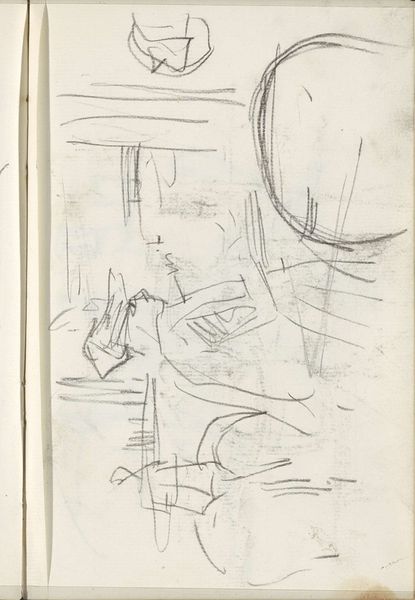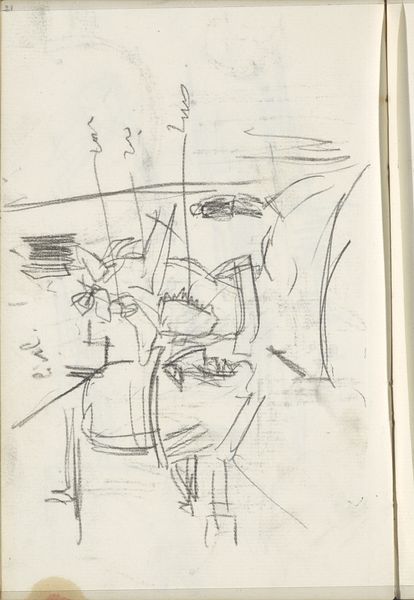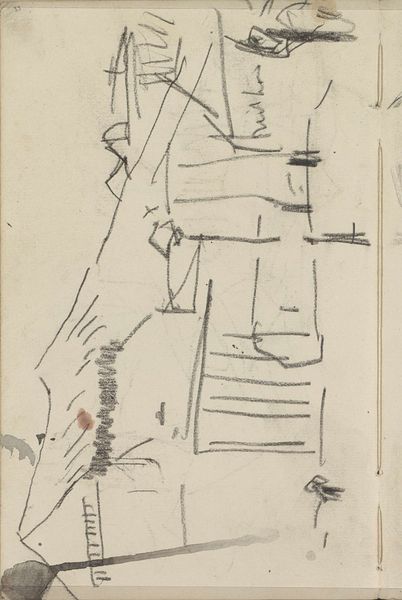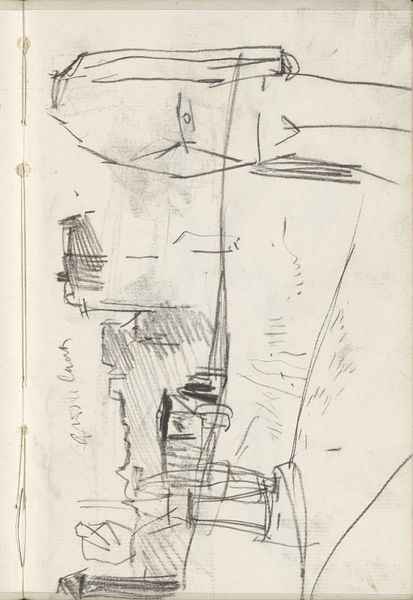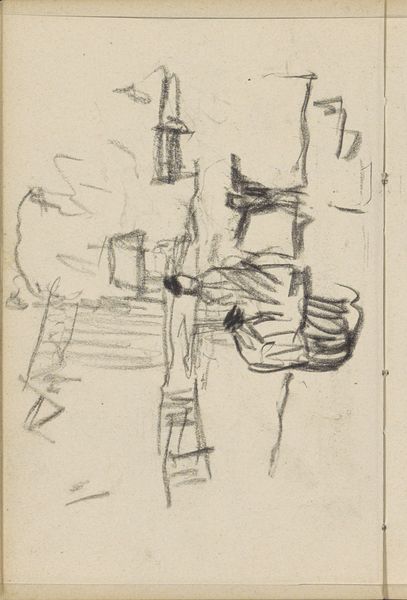
Copyright: Rijks Museum: Open Domain
Curator: Breitner's "Paard-en-wagen," or "Horse and Cart," rendered in pencil around 1917, immediately strikes me as a ghostly memory rather than a solid scene. What is your take? Editor: Faded. A little sad, honestly. Like a half-remembered dream about work. All those rough lines hinting at shape without quite solidifying. The way the forms hover...like spirits tethered to earthly duty. Curator: It is interesting that you interpret the sketch's effect with an emphasis on such wistful undertones. The artist was actually famous for capturing bustling city scenes in a more dynamic spirit. Now, consider this drawing is really just a few simple lines on paper – and yet the suggestion of a horse-drawn carriage is very strong. The circular lamps especially. Editor: Yes, it's there, isn't it? The lamp is just a couple of circles, but our minds want to make sense of it, turning it into something familiar, like recognizing constellations. The very rough depiction lends itself to suggestion...allowing me to fill in the emotional blanks. It’s almost unfinished. Curator: True! We know he did not always consider these preliminary sketches as ends in themselves. They captured observations for paintings, translating fleeting impressions into a coded system of strokes. Each line is information, but its emotional tenor is more complex because it allows more space for our personal reaction. Editor: A beautiful corpse. The city at work, yes, but now entombed on the page, a faint rubbing, not exactly vibrant. Which, strangely, draws me in. I feel like a ghost myself looking at it, caught in time. Curator: A poignant reading! Perhaps Breitner knew more than we give him credit for about summoning that ghostly presence even in his sketches, allowing a sense of remembrance, a link across time. Editor: Maybe, or maybe it’s me…reading in more than he intended! Either way, thanks for highlighting the image!
Comments
No comments
Be the first to comment and join the conversation on the ultimate creative platform.
